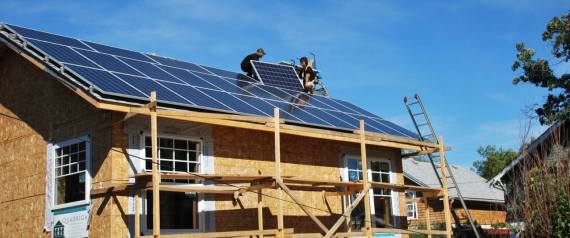EDMONTON’S FIRST LANEWAY HOME HAS NO CARBON FOOTPRINT
An Edmonton couple is hoping to turn their passion for green energy into a money-saving one by building a laneway home that produces exactly as much energy as it consumes.
Karly Coleman and Andreas Hengst worked with local consulting company Carbon Busters to create the eco home — the first of its kind in the city.
The 638 sq.-ft. two-bedroom home sits above a garage of the same size in the Westmount neighbourhood. The home is powered by solar panels and a special wall. It also features thermal storage, an air-to-water heat pump and extra insulation on the walls and windows.
There’s also a plug-in for an electric car charger in the garage.
The entire home emits zero greenhouse gases and is powered entirely from renewable energy. Coleman and Hengst finished the home at the beginning of February. They hosted an open house to show it off to prospective tenants on Saturday.
“My husband and I are both committed to reducing our footprint in as many ways as possible,” Coleman told Metro News. “He’s involved in solar energy renewal, and I’m a committed bicycle advocate. It made a lot of sense to build what we value.”
Last year, Edmonton recently amended its zoning bylaw to allow laneway homes, which are built on the back half of a property with entrances facing alleyways.
Because of they’re smaller than conventional houses, laneway homes could provide affordable housing in areas facing a shortage of space.
Mayor Don Iveson called the laneway home a positive example of a progressive housing solution in the city.
“This is one of the first examples with the rules that council created about a year and a half ago,” Iveson said in an interview with Global News. “It’s great to see it finished and so far the reaction from the neighbourhood has been really positive and that’s great to see.”
The couple is hoping their home inspires others to build greener living spaces.
While the home is a great way to reduce its dweller’s carbon footprint, the couple will have to wait a bit longer for the financial perks to kick in.
It costs approximately $50,000 more to build a laneway house than a regular home, Godo Stoyke of Carbon Busters told the St. Albert Gazette. That means it will take about 15 years for the savings to show up on the owners’ energy bill.








Follow Us!